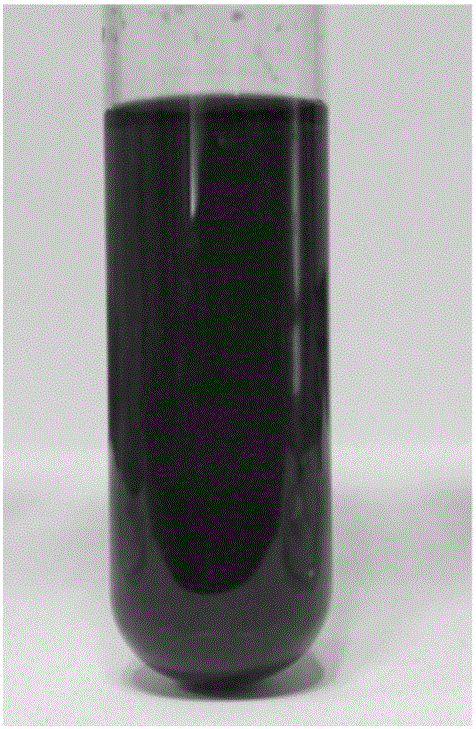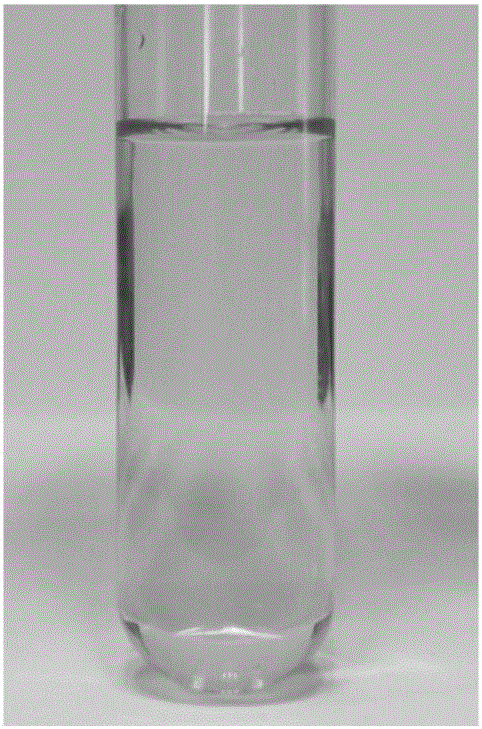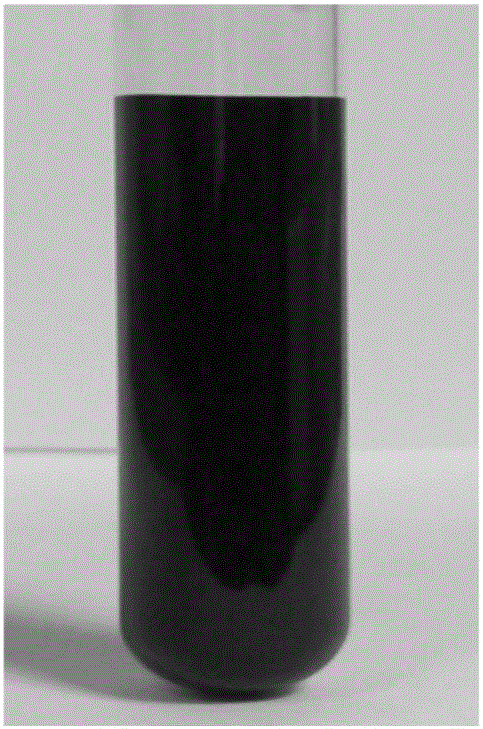Method for catching dye in dyeing wastewater by taking organic acid as additive
A technology for dyeing wastewater and organic acids, applied in chemical instruments and methods, water pollutants, water/sewage treatment, etc., can solve the problems of low safety, limited number of cycles, high cost, etc., and achieve low consumption and high capture efficiency High, easy-to-operate effect
- Summary
- Abstract
- Description
- Claims
- Application Information
AI Technical Summary
Problems solved by technology
Method used
Image
Examples
Embodiment 1
[0029] A kind of method that this embodiment provides uses organic acid as additive to capture the dyestuff in dyeing wastewater, comprises the following steps:
[0030] 1) Choose reactive black ED-H to dye according to conventional prescription and process. Then collect the staining residue to be captured, and dilute the residue 30 times to test its optical density value;
[0031] 2) Take 50mL of the dyeing residue, and add dodecylbenzenesulfonic acid to it, and the concentration is 0.05g / L, then stir evenly, then add an equal volume of capture base, and stir the mixed system for 10min while heating, Among them, the temperature should not exceed 60°C, and then stand for stratification;
[0032] 3) Observing the stratification phenomenon, separating the aqueous phase to measure the optical density value (diluted 30 times) and the TDS value (diluted 100 times) after the neutralization of the aqueous phase, and calculating the capture efficiency and the salt content of the aque...
Embodiment 2
[0035] A kind of method that this embodiment provides uses organic acid as additive to capture the dyestuff in dyeing wastewater, comprises the following steps:
[0036] 1) Choose reactive black ED-H to dye according to conventional prescription and process. Then collect the staining residue to be captured, and dilute the residue 30 times to test its optical density value;
[0037] 2) Take 50mL of the dyeing residue, and add octadecylbenzenesulfonic acid to it at a concentration of 1.0g / L, then stir evenly, then add an equal volume of capture base, and stir the mixed system for 10min while heating, wherein Stirring temperature should not exceed 60°C, and then stand to separate layers;
[0038] 3) Observing the stratification phenomenon, separating the aqueous phase to measure the optical density value (diluted 30 times) and TDS value (diluted 100 times), and calculating the capture efficiency and the salt content of the aqueous phase, respectively. The test results are shown...
Embodiment 3
[0041] A kind of method that this embodiment provides uses organic acid as additive to capture the dyestuff in dyeing wastewater, comprises the following steps:
[0042] 1) Choose reactive black ED-H to dye according to conventional prescription and process. Then collect the staining residue to be captured, and dilute the residue 30 times to test its optical density value;
[0043] 2) Take 50mL of the dyeing residue, and add tetradecylbenzenesulfonic acid to it at a concentration of 10g / L, then stir evenly, then add an equal volume of capture base, and stir the mixed system for 10min while heating, during which The temperature should not exceed 60°C, and then stand for stratification;
[0044] 3) Observing the stratification phenomenon, separating the aqueous phase to measure the optical density value (diluted 30 times) and the TDS value (diluted 100 times) after the neutralization of the aqueous phase, and calculating the capture efficiency and the salt content of the aqueou...
PUM
 Login to View More
Login to View More Abstract
Description
Claims
Application Information
 Login to View More
Login to View More - R&D
- Intellectual Property
- Life Sciences
- Materials
- Tech Scout
- Unparalleled Data Quality
- Higher Quality Content
- 60% Fewer Hallucinations
Browse by: Latest US Patents, China's latest patents, Technical Efficacy Thesaurus, Application Domain, Technology Topic, Popular Technical Reports.
© 2025 PatSnap. All rights reserved.Legal|Privacy policy|Modern Slavery Act Transparency Statement|Sitemap|About US| Contact US: help@patsnap.com



